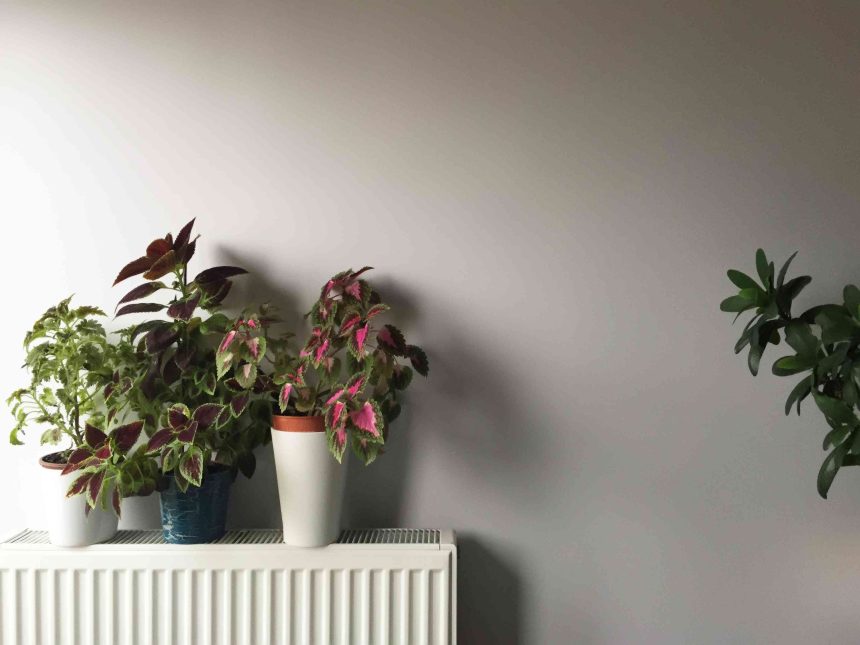If you have houseplants, it might seem that placing them near the heater will replicate their spring and summer growth season. You could keep them feeling as if they’re on a tropical vacation throughout winter’s chilliest days.
And, for some plants, a heater can be a helpful in making sure that your home maintains its ideal temperature requirements. But that’s not always the case. In some situations, your heater could actually end up damaging or even killing your plants.
“Plants require moderate heat, yet excessive warmth leads to dehydration, which gardeners might not anticipate,” says Tammy Sons, founder and CEO of TN Nursery.
Want to make sure you avoid accidentally scorching your plants? Here’s how to make sure your plants are both warm and happy this winter.
Meet the Expert
- Tammy Sons is the founder and CEO of TN Nursery, a nursery with over 60 years of experience.
- Valeria Nyman is the chief product officer at Taim.io, a community for gardeners.
Why Heaters Are Bad For Houseplants
Heaters, including space heaters can warm up a room significantly and quickly, making it more comfortable for plants and people alike. But, while the warm the air, they also remove moisture and humidity.
“Space heaters can behave like a desert wind,” says Taim.io’s chief product officer, Valeria Nyman.
Nyman points out that a space heater can drop the humidity in a room to as low as 10%, when the ideal humidity level for most houseplants is 50 to 60%.
“They blast warmth but often strip away moisture, creating an instant micro-drought,” she says.
This drying environment can cause a plant to suffer from superficial problems, like crispy leaves and scorched spots in the areas closest to the space heater, but it can also result in bigger issues like stunted growth caused from general stress, Sons says.
Want more gardening tips? Sign up for our free gardening newsletter for our best growing tips, troubleshooting hacks, and more!
How to Spot Damage From Heaters
If you are concerned your heater is damaging your plants, here are a few signs to look out for. All of these signs come back to the one critical issue that heaters cause: lack of moisture in the air.
Dehydrated Leaves
If your plant’s leaves look wilted or droopy, these could be signs of dehydration. Your plant is losing too much moisture due to the humidity that’s being stripped from the air by the space heater.
Scorched Leaves
Leaves that look crispy along the edges are a sign of either direct heat damage or damage from lack of moisture. As Sons points out, plants want consistent warmth, not blasts of heat, which can cause scorching.
Discolored Leaves
Leaves that have started to turn brown or yellow may be dehydrated due to moisture loss from heater damage.
Growth Issues
Most plants go into a more dormant phase during the winter, but if you notice significant stunted growth or leaves dropping rapidly, this could be due to the heater sitting near your houseplants.
Alternatives to Heaters
If your plants spend the winter in a drafty room where it’s difficult to keep the temperature between 60 and 75 degrees Fahrenheit, then it’s okay to turn to additional heat.
Sons recommends alternatives to space heaters or radiators, like root-targeted heating mats and enhanced insulation, which provide steady, gentle heat rather than bursts of harsh artificial heat.
“Plants grow best when their environment maintains stability because sudden bursts of artificial heat interfere with their natural development patterns,” Sons says.
When You Might Want a Space Heater For Your Plants
Sons explains that gardeners often turn to space heaters in greenhouses and other indoor plant spaces where warmth is critical, and it can work if you create the correct environment. Make sure there’s another humidity source to provide your plants with moisture that will counteract the space heater.
Gardeners are often told to cut back watering frequency during the winter, but you can still provide moisture using methods like a humidifier, a pebble tray under your plants to retain moisture, or placing them in rooms which have more moisture, like a bathroom or kitchen.







